Ldb1-nucleated transcription complexes function as primary mediators of global erythroid gene activation
- PMID: 23610375
- PMCID: PMC3668490
- DOI: 10.1182/blood-2013-01-479451
Ldb1-nucleated transcription complexes function as primary mediators of global erythroid gene activation
Abstract
Erythropoiesis is dependent on the lineage-specific transcription factors Gata1, Tal1, and Klf1. Several erythroid genes have been shown to require all 3 factors for their expression, suggesting that they function synergistically; however, there is little direct evidence for widespread cooperation. Gata1 and Tal1 can assemble within higher-order protein complexes (Ldb1 complexes) that include the adapter molecules Lmo2 and Ldb1. Ldb1 proteins are capable of coassociation, and long-range Ldb1-mediated oligomerization of enhancer- and promoter-bound Ldb1 complexes has been shown to be required for β-globin gene expression. In this study, we generated a genomewide map of Ldb1 complex binding sites that revealed widespread binding at erythroid genes and at known erythroid enhancer elements. Ldb1 complex binding sites frequently colocalized with Klf1 binding sites and with consensus binding motifs for other erythroid transcription factors. Transcriptomic analysis demonstrated a strong correlation between Ldb1 complex binding and Ldb1 dependency for gene expression and identified a large cohort of genes coregulated by Ldb1 complexes and Klf1. Together, these results provide a foundation for defining the mechanism and scope of Ldb1 complex activity during erythropoiesis.
Figures

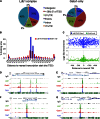
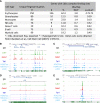
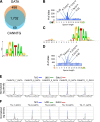
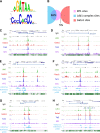
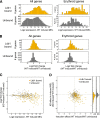
Similar articles
-
Ldb1 complexes: the new master regulators of erythroid gene transcription.Trends Genet. 2014 Jan;30(1):1-9. doi: 10.1016/j.tig.2013.10.001. Epub 2013 Nov 27. Trends Genet. 2014. PMID: 24290192 Free PMC article. Review.
-
Identification of a TAL1 target gene reveals a positive role for the LIM domain-binding protein Ldb1 in erythroid gene expression and differentiation.Mol Cell Biol. 2003 Nov;23(21):7585-99. doi: 10.1128/MCB.23.21.7585-7599.2003. Mol Cell Biol. 2003. PMID: 14560005 Free PMC article.
-
Distinct Ldb1/NLI complexes orchestrate γ-globin repression and reactivation through ETO2 in human adult erythroid cells.Blood. 2011 Dec 1;118(23):6200-8. doi: 10.1182/blood-2011-06-363101. Epub 2011 Oct 18. Blood. 2011. PMID: 22010104 Free PMC article.
-
Multiple functions of Ldb1 required for beta-globin activation during erythroid differentiation.Blood. 2010 Sep 30;116(13):2356-64. doi: 10.1182/blood-2010-03-272252. Epub 2010 Jun 22. Blood. 2010. PMID: 20570862 Free PMC article.
-
The Hematopoietic Stem and Progenitor Cell Cistrome: GATA Factor-Dependent cis-Regulatory Mechanisms.Curr Top Dev Biol. 2016;118:45-76. doi: 10.1016/bs.ctdb.2016.01.002. Epub 2016 Feb 26. Curr Top Dev Biol. 2016. PMID: 27137654 Free PMC article. Review.
Cited by
-
Current insights into the role of Fli-1 in hematopoiesis and malignant transformation.Cell Mol Life Sci. 2022 Feb 28;79(3):163. doi: 10.1007/s00018-022-04160-1. Cell Mol Life Sci. 2022. PMID: 35412146 Free PMC article. Review.
-
Genome-Wide Organization of GATA1 and TAL1 Determined at High Resolution.Mol Cell Biol. 2015 Oct 26;36(1):157-72. doi: 10.1128/MCB.00806-15. Print 2016 Jan 1. Mol Cell Biol. 2015. PMID: 26503782 Free PMC article.
-
Insight into GATA1 transcriptional activity through interrogation of cis elements disrupted in human erythroid disorders.Proc Natl Acad Sci U S A. 2016 Apr 19;113(16):4434-9. doi: 10.1073/pnas.1521754113. Epub 2016 Apr 4. Proc Natl Acad Sci U S A. 2016. PMID: 27044088 Free PMC article.
-
GFI1B, EVI5, MYB--additional genes that cooperate with the human BCL6 gene to promote the development of lymphomas.Blood Cells Mol Dis. 2014 Jan;52(1):68-75. doi: 10.1016/j.bcmd.2013.07.003. Epub 2013 Jul 30. Blood Cells Mol Dis. 2014. PMID: 23910958 Free PMC article.
-
Comprehensive proteomic analysis of murine terminal erythroid differentiation.Blood Adv. 2020 Apr 14;4(7):1464-1477. doi: 10.1182/bloodadvances.2020001652. Blood Adv. 2020. PMID: 32282884 Free PMC article.
References
-
- Schlaeger TM, Mikkola HK, Gekas C, Helgadottir HB, Orkin SH. Tie2Cre-mediated gene ablation defines the stem-cell leukemia gene (SCL/tal1)-dependent window during hematopoietic stem-cell development. Blood. 2005;105(10):3871–3874. - PubMed
-
- Pevny L, Simon MC, Robertson E, et al. Erythroid differentiation in chimaeric mice blocked by a targeted mutation in the gene for transcription factor GATA-1. Nature. 1991;349(6306):257–260. - PubMed
-
- Welch JJ, Watts JA, Vakoc CR, et al. Global regulation of erythroid gene expression by transcription factor GATA-1. Blood. 2004;104(10):3136–3147. - PubMed
Publication types
MeSH terms
Substances
Grants and funding
LinkOut - more resources
Full Text Sources
Other Literature Sources
Molecular Biology Databases

